Picture this: You’ve got a steady stream of customers walking through your doors or clicking “add to cart” on your website. But the moment they leave, they vanish—off to the next shiny offer from another brand. No loyalty. No repeat business. Just a revolving door of one-time transactions.
Soul-crushing, isn’t it?
For decades, loyalty programs have promised to solve this problem. But here’s the twist: most of them don’t. At least, not in the way we’ve been taught to think.
The old model—buy ten, get one free; 10% off your next purchase; points you forget about—it’s tired. Customers have grown numb to it. In today’s saturated market, the real benefits of implementing loyalty programs come when we stop treating them like glorified coupons and start seeing them as relationship builders.
Let’s challenge the status quo and explore how loyalty, when done right, becomes the heartbeat of your brand’s long-term success.
The Loyalty Lie: Why Traditional Programs Fall Flat
We’ve been sold the idea that discounts = loyalty. That if you knock a few bucks off, customers will come running back. But here’s the truth:
- Discounts train people to wait for cheaper prices, not fall in love with your brand.
- Points systems are often confusing and lack emotional appeal.
- Generic rewards feel impersonal—your customer isn’t an algorithm, they’re a human being.
Sure, these programs might drive short-term sales, but they rarely build the kind of connection that keeps people coming back when your competitor runs a flash sale.
So what do we do instead? We shift from transactional to emotional. And that’s where the real benefits of implementing loyalty programs begin to unfold.
Personalization: The Soul of Modern Loyalty
Imagine walking into your favorite coffee shop and the barista already knows your order—extra foam, oat milk, two pumps of vanilla. You feel seen. Valued. Special.
That’s personalization—and it’s the secret sauce of loyalty today.
Modern loyalty programs use data not just to track purchases, but to understand behavior. Preferences. Timing. Frequency. And then they act on that insight, offering:
- Tailored rewards based on buying habits
- Product recommendations that actually make sense
- Exclusive perks for your most engaged customers
This isn’t Big Brother. It’s being a better host.
And it works. Customers are 80% more likely to buy when brands offer personalized experiences. That’s not just a stat—it’s a wake-up call.
Emotional Connection: Loyalty’s Secret Weapon
Humans are wired for emotion. We remember how brands make us feel more than what they sell. So, how do you tap into that?
Start with meaningful moments:
- A birthday message with a reward that feels like a gift, not a gimmick
- A thank-you note after a big purchase—handwritten, even better
- Surprise upgrades or early access to new products
These aren’t just “nice to haves.” They’re the heartbeat of a loyalty strategy that moves beyond transactions and builds actual relationships.
Want proof? Just look at brands like Sephora and Starbucks. Their loyalty programs aren’t just popular—they’re beloved. Why? Because they make customers *feel* something.
And if you’re wondering how to bring that emotional magic into your business, check out this read on how customer loyalty programs can be the gift that keeps on giving. It’s packed with actionable ideas to inspire your next move.
Behavioral Loyalty: The New Gold Standard
Let’s get nerdy for a sec. There’s a difference between attitudinal loyalty (“I love this brand!”) and behavioral loyalty (“I keep buying from this brand.”)
Great brands aim for both, but if you have to choose, behavioral loyalty pays the bills.
Here’s how you encourage it:
- Micro-rewards for small actions—like writing a review or sharing on social
- Tiered programs that increase value as engagement grows
- Gamified experiences that make loyalty feel fun, not forced
Think of it like training a muscle. The more you reward desired behavior, the stronger it becomes. Over time, it turns into habit. And habit? That’s the holy grail of customer retention.
Standing Out in a Saturated Market
Let’s be real—there are a thousand brands offering the same products as you. What sets you apart?
Hint: It’s not your price.
It’s your story. Your values. Your connection to people.
When your loyalty program reflects your brand’s unique voice—whether that’s cheeky, classy, rebellious, or nurturing—it becomes a mirror your customers see themselves in.
That emotional mirror is magnetic.
It also builds community. Imagine a rewards program that gives customers points for attending local events, referring friends, or donating to charity. Suddenly, they’re not just buying—they’re belonging.
This kind of differentiation is what makes loyalty programs not only survive—but thrive—in a crowded field.
Practical Tips to Upgrade Your Loyalty Game
Ready to move beyond the same-old points system? Here’s how to transform your loyalty program into a strategic powerhouse:
- Start with your customer’s journey—map out key touchpoints and build your program around them
- Use tools like Smile.io, Yotpo, or LoyaltyLion to design flexible rewards systems and track performance
- Experiment with emotional triggers—gratitude, surprise, recognition
- Measure what matters: retention rate, repeat purchase rate, and customer lifetime value
And don’t be afraid to rethink everything. Loyalty isn’t about doing what’s always been done—it’s about doing what actually works for your customers.
The benefits of implementing loyalty programs lie in their ability to create emotional resonance, behavioral consistency, and brand differentiation. But only if we’re brave enough to ditch outdated models and embrace strategies that put humans—not discounts—at the center.
Because in a world where everyone gets a discount, only those who harness personalization and emotional connections can truly turn one-time buyers into lifelong fans.

